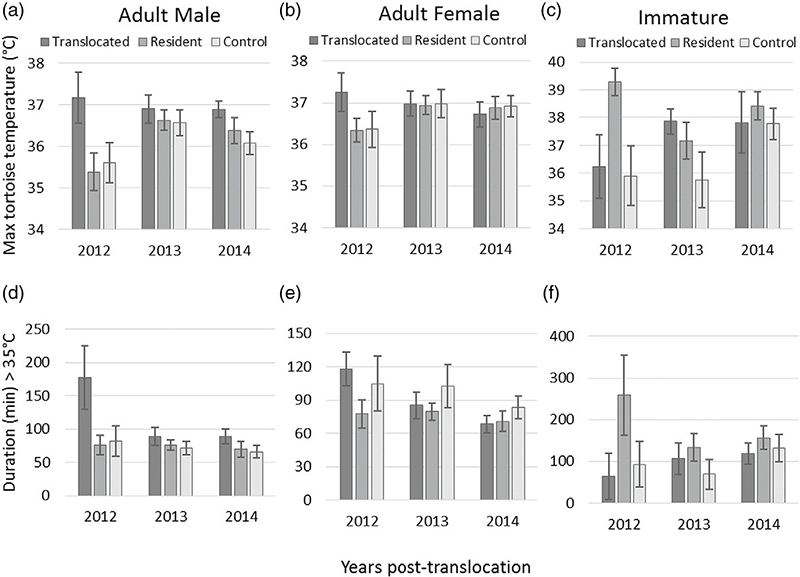CSP finds that translocating the Mojave desert tortoise during the spring has a minimal effect on behavioral thermoregulation, a critical adaptation in extreme climates.
The Mojave Desert is a global solar energy hotspot. It offers great potential for developing utility-scale solar power facilities that can supply electricity demand and meet regulatory priorities. However, this region is also home to 29 species and subspecies that are listed as threatened or endangered under the Endangered Species Act. A common mitigation strategy for one such species — the Mojave desert tortoise — involves short-distance translocation away from the facilities.
Recognizing the need to better understand the impacts of mitigation-driven translocations on sensitive species, CSP initiated a study that entailed monitoring 215 tortoises over 3 years. We used mixed models to evaluate the effects of translocating tortoises adjacent to the world’s largest solar thermal plant, the Ivanpah Solar Electric Generating System, located in southern California. In particular, we examined the potential impacts of translocation on thermoregulation, the process tortoises use to regulate their body temperature and avoid water loss by locating burrows or other cover sites. This coping mechanism is critical in an area where the extreme summer temperatures could have negative consequences on body temperature, condition, growth, or mortality.
The study results suggest that the impacts of short-distance translocation during the spring were minimal. The temperatures of translocated tortoises were highest in the first month but then quickly mimicked residents and controls. For all groups, body condition and carapace length increased after translocation and mortality probability remained the same.
Our study — one of just a handful to address translocation-related impacts — builds on our previous work looking at the space use patterns of Mojave desert tortoises. It serves as a unique example and first step to evaluate and reduce the effects of solar energy development on sensitive species.


